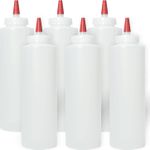Tackling Large Tabletops
Make a tabletop that''s as strong as an airplane wing using torsion-box construction
Synopsis: The boat-shaped table featured in this article, if built of solid wood, would be unstable and too heavy, so the author made a torsion-box tabletop instead. A torsion box is constructed like an airplane wing, so it has a high strength-to-weight ratio. Author Kim Carleton Graves explains how to use a resin-impregnated cardboard honeycomb and an MDF frame between thin skins of veneer. He provides detail on cutting the core to fit the frame, building the core a layer at a time, assembling and gluing it up, using templates, building up the edges, and veneering the large surface area.
Modern engineering has always seemed like magic to me. I find it amazing that skyscrapers don’t collapse of their own weight and that bulky airplanes get off the ground and stay airborne. What makes these structures work, of course, are designs that distribute stresses over large areas.
I’ve wanted to use this principle in building furniture, and recently—after 11 years of making furniture with solid wood or ordinary plywood construction—I decided to build a torsion-box table. A torsion box is constructed much like an airplane wing, so it has a high strength-to-weight ratio. If I had built this tabletop from solid wood, it would be dimensionally unstable and too heavy to manage. The beauty of torsionbox construction is that it keeps the tabletop lightweight and flat, and it doesn’t sag under its own weight.
Because I was making a large, formal dining table, I decided to build what’s called a boat shape. The boat shape became popular for conference tables when researchers found that people seated at these curved tables could see and hear each other better than they could at long, straight tables. My feeling is that talking to your family and friends at dinner is just as important as talking to your colleagues or clients at meetings.
Anatomy of a torsion box
A torsion box consists of two thin skins glued to a core structure between them. The strength of the box comes from the gluelines, which are very thin individually but add up to a lot of glue surface overall. To make a core structure, you can staple together a simple lattice of wooden strips, which is the best alternative if you don’t have a vacuum press. But making a lattice in this way is a lot of work, so I decided to use resin-impregnated cardboard honeycomb instead. Using this material for the core made the construction process cheaper and faster. Although the honeycomb is made of paper, it has enough glue surface to make a strong bond.
As you can see in the drawing on p. 77, I put an MDF frame around the honeycomb. This frame isn’t needed for strength, but it protects the honeycomb from damage in the vacuum press. Also, it’s used later to attach the veneer on the built-up edges around the table. Those edges hide the connection between pedestals and tabletop, and they make the tabletop look thicker than it really is.
From Fine Woodworking #151
For the full article, download the PDF below:
Fine Woodworking Recommended Products

Glue Bottle

Bessey K-Body Parallel-Jaw Clamp

Dubuque Clamp Works Bar Clamps - 4 pack





















Log in or create an account to post a comment.
Sign up Log in